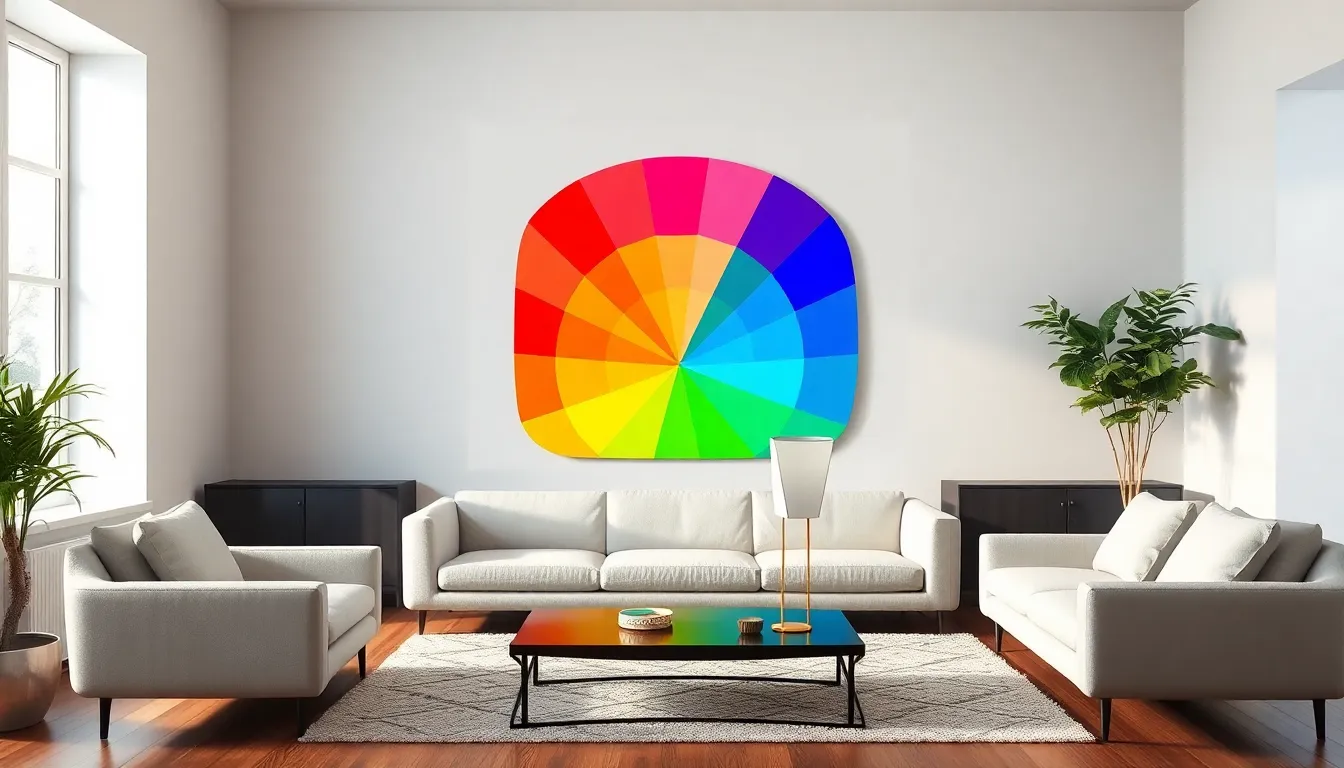Color isn’t just a splash on the wall; it’s the mood, the vibe, and the personality of a space. Imagine walking into a room painted in vibrant yellow and instantly feeling like you’ve been transported to a sunny beach. Now picture a drab gray room that feels more like a waiting room at the dentist. The right colors can elevate interiors from blah to breathtaking, and choosing them wisely can make all the difference.
Table of Contents
ToggleThe Importance Of Color In Interior Design
Color significantly influences the overall atmosphere of spaces. Vibrant hues, such as yellow and blue, often bring energy and clarity to interiors. Neutral tones, like beige and white, create a sense of calm and simplicity, promoting relaxation. Selecting the right colors can transform any space from dull to inviting.
Certain colors evoke specific emotions and reactions. For instance, red stimulates excitement, while green offers a refreshing and soothing effect. Awareness of these associations is crucial when choosing a palette for a room. Colors can enhance or detract from the desired aesthetic, significantly impacting the user experience.
Different areas in a home benefit from unique color schemes. Living rooms thrive with warm and inviting colors, fostering social interactions. In contrast, bedrooms often call for cooler, muted tones that promote restfulness. Kitchens typically benefit from lively colors that stimulate appetite and creativity.
Additionally, color can affect perceived space. Lighter shades often make rooms feel larger and more open, while darker colors can create an intimate atmosphere. Strategically using color can alter perceptions, making the most of both small and large spaces.
Designers leverage color theory to create harmonious palettes. Complementary colors enhance each other, making spaces visually dynamic. Conversely, monochromatic schemes provide a cohesive look while allowing for personal expression through varying shades. Understanding the principles of color can lead to expertly designed interiors that resonate with inhabitants.
Color serves not only aesthetic purposes but also functional needs. It can be used to highlight architectural features or draw attention away from less desirable aspects. Thoughtful color choices enable designers to enhance beauty and usability throughout a space.
Color Theory Basics


Understanding color theory is essential in interior design. It provides a foundation for creating harmonious and effective color schemes.
Primary, Secondary, And Tertiary Colors
Primary colors consist of red, blue, and yellow. These colors can’t be formed by mixing other colors. Secondary colors, including green, orange, and purple, result from combining primary colors. Tertiary colors emerge from mixing a primary color with a neighboring secondary color, creating hues like red-orange and blue-green. Each color category plays a role in establishing a balanced interior palette, enhancing overall aesthetics. Designers often utilize these colors strategically to influence mood and energy levels in a space.
Color Wheel And Its Applications
A color wheel visually represents color relationships and categories. It typically arranges primary, secondary, and tertiary colors in a circular format. Designers use the wheel to identify complementary colors, which are opposite each other, and analogous colors, which sit next to each other. Pairing complementary colors creates striking contrasts, while analogous colors yield a serene effect. Understanding the applications of the color wheel enables designers to create visually appealing interiors that convey specific atmospheres and emotional responses. This strategic approach enhances the functionality and beauty of interior spaces.
The Psychological Effects Of Color
Colors significantly influence feelings and behaviors, shaping the atmosphere in interior spaces. Understanding these psychological effects helps in making informed design choices.
Warm Vs. Cool Colors
Warm colors like red, orange, and yellow generate energy and excitement. These hues encourage interaction and warmth, making them ideal for social areas such as living rooms. Cool colors, including blue, green, and purple, promote calm and relaxation. Spaces such as bedrooms benefit from these tranquil tones, creating a soothing environment for rest. Designers often balance warm and cool colors to achieve harmony in a room’s ambiance, ensuring both visual appeal and emotional comfort.
Color Choices And Mood Enhancement
Specific color choices enhance moods effectively. Red stimulates excitement and passion, often used in dining areas to boost appetite. Blue inspires tranquility and trust, perfect for spaces intended for relaxation or concentration. Yellow brings cheerfulness, working well in kitchens and children’s rooms. Green provides a sense of renewal and balance, suitable for spaces like home offices. Selecting colors intentionally according to their psychological impacts leads to well-designed interiors that resonate emotionally with occupants.
Popular Color Schemes In Interior Design
Color schemes play a crucial role in enhancing the aesthetic appeal of a space. They create mood and set the tone for the environment.
Monochromatic Palettes
Monochromatic palettes operate around one color by using various shades, tints, and tones. This scheme provides a cohesive look that’s visually pleasing and elegant. Designers often utilize lighter shades to create an airy feeling, while darker tones impart sophistication. These schemes offer simplicity and versatility, working well in contemporary environments. By adjusting the saturation and brightness, designers can introduce depth and interest without overwhelming the space.
Complementary And Analogous Colors
Complementary colors consist of pairs that sit opposite each other on the color wheel. These combinations generate striking contrasts and dramatic effects. For instance, blue and orange together can create vibrant energy in a room. Analogous colors, found next to each other on the wheel, promote harmony and tranquility. They blend seamlessly and create subtle variations, suitable for spaces where comfort is a priority. Designers skillfully mix these color schemes to enhance functionality and maintain aesthetic balance across different areas of a home.
Tips For Choosing The Right Colors
Choosing the right colors significantly enhances the aesthetic and emotional resonance of interior spaces. These tips provide guidance for making informed decisions.
Consideration Of Space And Light
Understanding space and light influences color choices greatly. Light affects how colors appear; bright spaces benefit from lighter hues that create an airy feel. Consider deeper colors in rooms with limited natural light to add warmth. An east-facing room might benefit from cooler shades, while a west-facing room enhances with warm tones during sunset. Observing how light shifts throughout the day guides effective color selection. Keep in mind that different surfaces reflect color differently, so testing samples in various lighting scenarios helps ensure the desired outcome.
Personal Style And Preferences
Personal style plays a crucial role in color selection. Expressing individuality through color creates a unique atmosphere that reflects personality. Familiarity with color psychology can lead to mood-enhancing choices. For example, if someone finds comfort in earthy tones, using shades of beige and green fosters tranquility. Conversely, bold colors may appeal to those who appreciate vibrancy. Collecting inspiration from design magazines or online platforms helps clarify preferences and define direction. Ultimately, combining personal taste with practical considerations leads to satisfying and engaging interiors.





